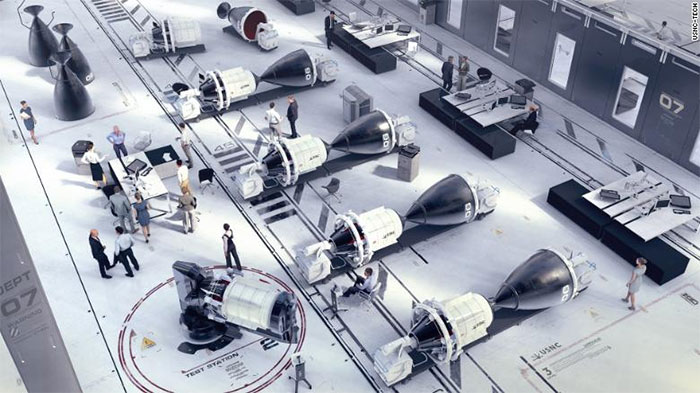Currently, the shortest trip that an unmanned spacecraft from Earth to Mars is 7 months, while if the spacecraft has astronauts at least 9 months.
According to CNN, the United States’ Aeronautics and Space Administration (NASA) is expected to bring people to Mars by 2035. However, actually reaching a planet 225 million kilometers from us is a problem.
 Cooler than Antarctica and virtually oxygen-free, Mars is an extremely inhospitable environment. The longer it takes for astronauts to get there and stay there, the greater the risks they face, including increased exposure to radiation, which in turn can cause health problems, cancer risks, effects on the central nervous system and degenerative diseases.
Cooler than Antarctica and virtually oxygen-free, Mars is an extremely inhospitable environment. The longer it takes for astronauts to get there and stay there, the greater the risks they face, including increased exposure to radiation, which in turn can cause health problems, cancer risks, effects on the central nervous system and degenerative diseases.
That’s why scientists are looking for ways to reduce the travel time to Mars. Seattle-based Ultra Safe Nuclear Technologies (USNC-Tech) came up with a solution: attach a nuclear propulsion engine (NTP) to a spacecraft so humans can be transported from Earth to Mars in just 3 months. Currently the shortest possible trip for an unmanned spacecraft is 7 months, but a crew mission is expected to take at least 9 months.
Michael Eades – technical director at USNC-Tech – says nuclear-powered rockets will be twice as powerful and efficient as the chemical engines in use today, which means they are portable. “Nuclear technology will extend the reach of humanity beyond Earth’s orbit and into deep space,” Eades explains. In addition to allowing humans to travel in space, this initiative could open up space for business opportunities in the galaxy.
The NTP system uses a nuclear reactor to generate heat from uranium fuel. This thermal energy heats a propellant, usually liquid hydrogen, which expands into gas and blows it backward, creating repulsion.
Rockets equipped with NTP have twice the thrust of current chemical systems. This means the technology could send astronauts to Mars and return to Earth in less than two years, instead of the more than three years currently calculated.
However, one of the main challenges in building NTP engines is finding a uranium fuel that can withstand the extreme temperatures inside a nuclear heat engine.
USNC-Tech claims to have solved this problem by developing a fuel that can operate at temperatures up to 2,426 degrees Celsius. The fuel contains silicon carbide – a material used to coat the tanks. This creates a closed air barrier that prevents radioactive material from escaping. the nuclear reactor, protecting the astronauts.
Rockets equipped with NTP have twice the thrust of current chemical systems.
Is the nuclear plan safe?
Shorter service times will limit the crew’s exposure to space radiation, but concerns remain about the radiation emitted by nuclear reactors inside the spacecraft.
This will be minimized by the design of the missile. Jeff Sheehy – chief technician of the NASA Space Technology Mission Executive Board – said that to protect people on the ground, the NTP spacecraft will not come directly from Earth. Instead, a conventional chemical rocket puts it into orbit, and only then will the operators activate the nuclear reactor. Once the spacecraft is already in orbit, it can do very little harm as explosions and thermal radiation cannot pass through a vacuum.
If disaster strikes and the missile’s reactor shatters, the debris will not fall to Earth or any other planet for at least tens of thousands of years. During this time, the radioactive material “naturally decomposes to the point that it is no longer dangerous.”


